The Daewoo K2 is the right arm of the people’s republic of best Korea. You may know about it, or perhaps you have seen it on youtube, but instead of a history lesson… we are going to shoot evaluate and review this rifle. Does it compare to our M16/M4 counterpart? Is it a great raifu? Let’s check it out.
Fit and Finish:
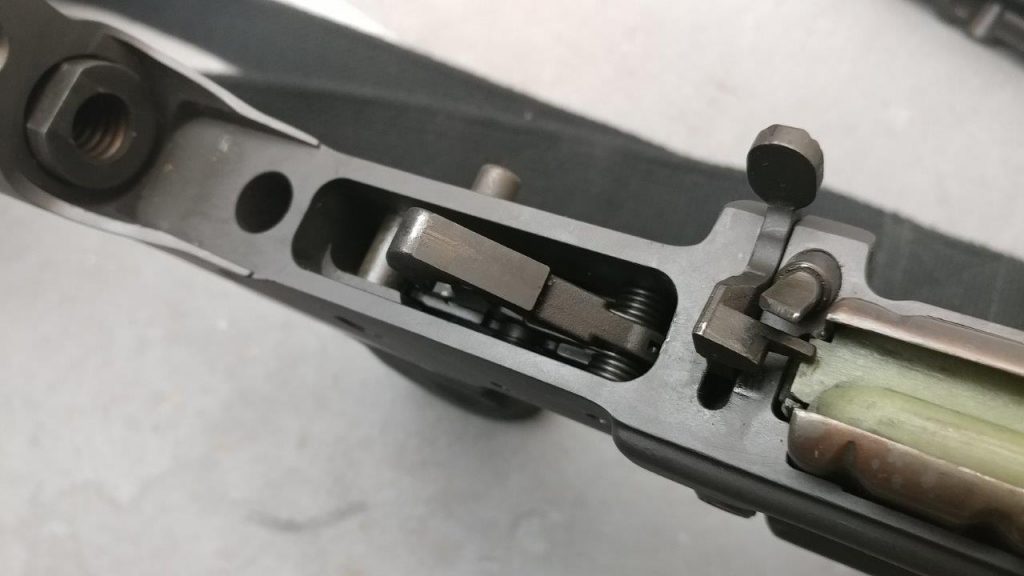
That’s THICC
One word. Robust. The Woo is robust and overbuilt. The receiver set looks to be made to survive decades of combat. It’s got a sleek “colt grey” finish and overall it’s bombproof. The barrel is a phosphated, lightweight profile barrel and features a forged from sight base. A front sling swivel is integrated into the barrel and rotates freely from side to side… this is a great feature that I wish the M16A2 had integrated below the FSB. The rifle has adjustable gas settings and can be locked out for single-shot (grenade launcher) use. The fire control group, bolt carrier, piston, and associated internals all look well made and cycle very cleanly via the round charging handle. The rifle is used, so I am unsure of the round count… but the gun charges as smooth as a well-broken in AR15. The hand-guards are a clam-shell plastic with a built-in heat shield. They feel flimsy in comparison to quality plastic M16 handguards.
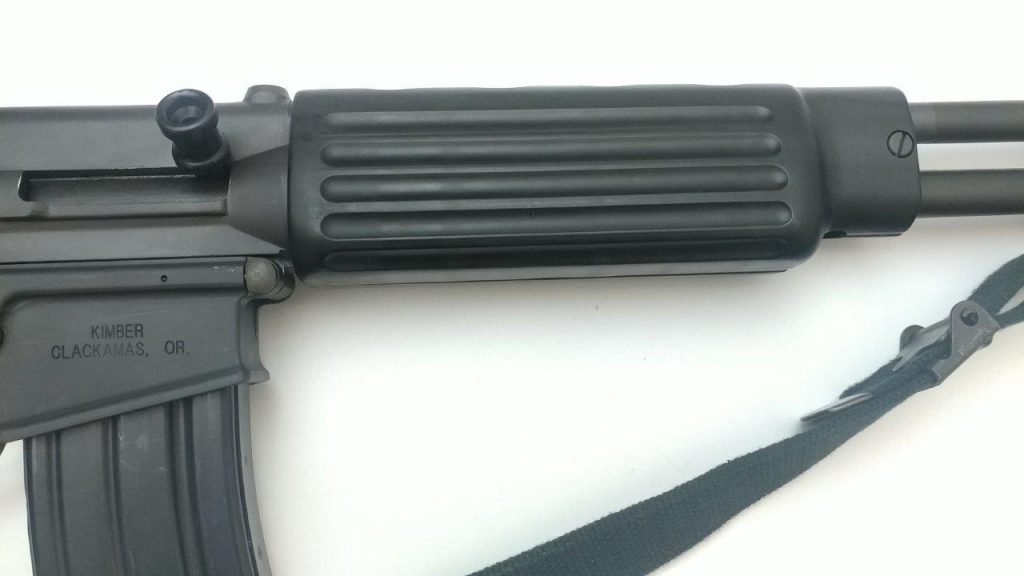
Internals:
The Woo’s factory trigger was quite clean, breaking at what I estimate to be 6-8 lbs. When I converted the rifle from imported to domestic status, I had to replace several components with US-made equipment. Luckily the FCG and mags are interchangeable with the M16 family of weapons. My rifle features a domestic trigger group from my parts bin to bring the parts count up to 922r compliance. A US-made stock, grip, FCG, and Magazine all add enough domestic parts to bring the rifle to domestic status.
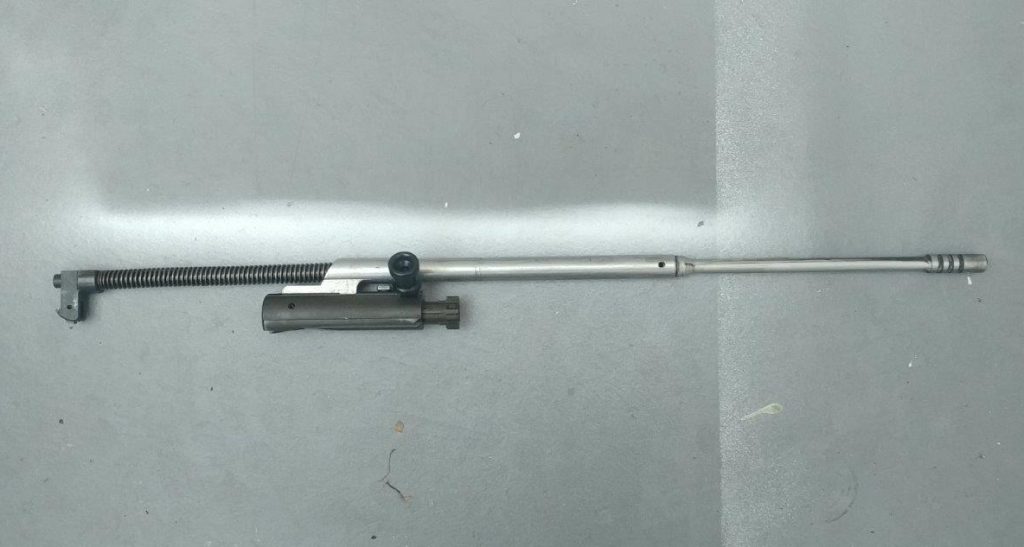
The bolt and piston assembly are familiar… having hints of AK-47 and being very much stoner designed at the same time. The interface between the bolt and carrier is simply a cutout where the piston assembly sits. The bolt carrier features a wide bearing surface at the rear of the receiver to reduce the effect of carrier tilt. The bolt itself resembles that of an AR15 as it features 7 lugs with one cut away to carve a path for the fixed ejector. The bolt assembly shares a cotter pin and cam pin with the m16 series of rifles, but is otherwise wholly unique and not compatible.
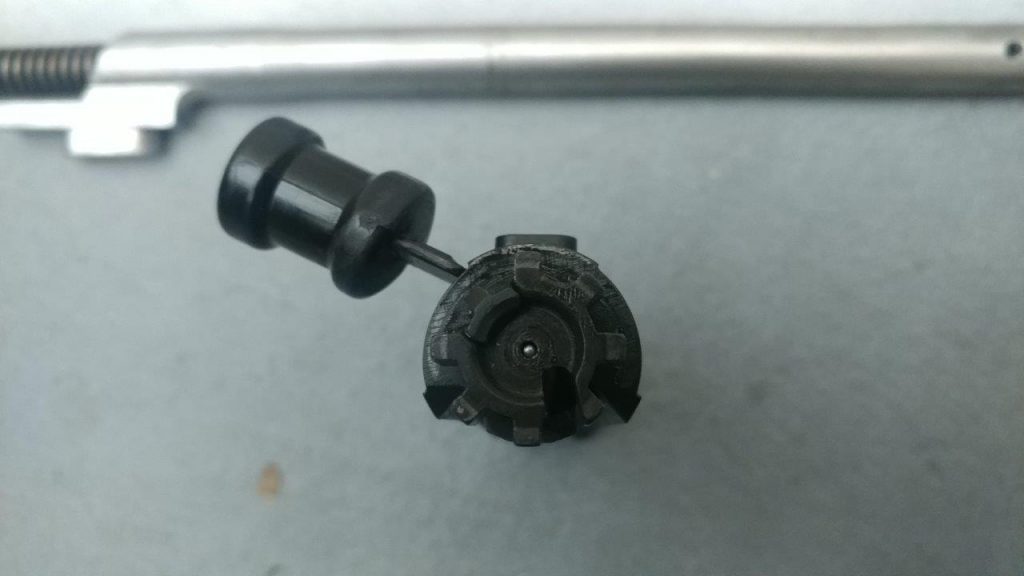
The rifle is 1:12 twist with a chrome-lined bore. I am excited to accuracy test it with 53-55 grain reloads. We will see how the rifle performs later in this article.
Ergonomics:
The ergonomics of the rifle are good, but perhaps you heard that the safety selector rotates 180 degrees? Yes. It does. It’s horrible. It cycles from fire to safe with heavy grit and is out of reach of all but Shaq Oneal. The other controls are within reach (save for the gas plug) however you cannot lock the bolt back by pushing the nub at the bottom of the bolt release. It isn’t there. You can pull up on the bolt catch and lock the bolt back, but it’s an odd design change.
The magazine release is also a bit farther away than that of an Ar15, and perhaps this is due to the Woo’s grip angle. The front hand-guard is nice and comfortable but lacks much in the way of real-estate.
My one regret is not having an authentic K2 with side-folding stock. The folding stocks have been lauded for their superb lockup. My sample is a fixed wire stock from ACE Ltd. It certainly feels robust, but the folding functionality will have to be added at a later date.
It’s a very interesting amalgamation. Hints of AK, FAL, M16 are all present. What makes me most appreciative of the design is how solid it is. The upper and lower receiver is overbuilt to the point of absurdity. Its gas system can be tuned for adverse conditions. It’s simply an interesting Frankenstein of a gun. Let’s hit the range.
In Use:
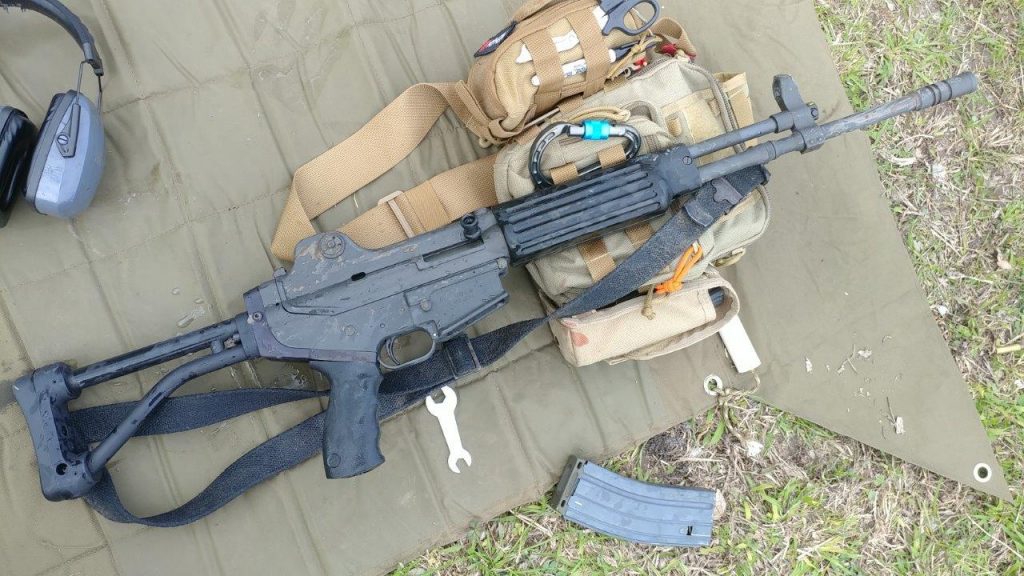
The K2 feels familiar to anyone who’s been behind an AK and /or an AR15. The controls from the AR are all present and accounted for save for the charging handle position.
The rear sight is a standard peep with plenty of sight radius. The rear adjustments are simple. A wheel below the peep is rotated for elevation adjustment and a standard M16A1 rear windage wheel is present.
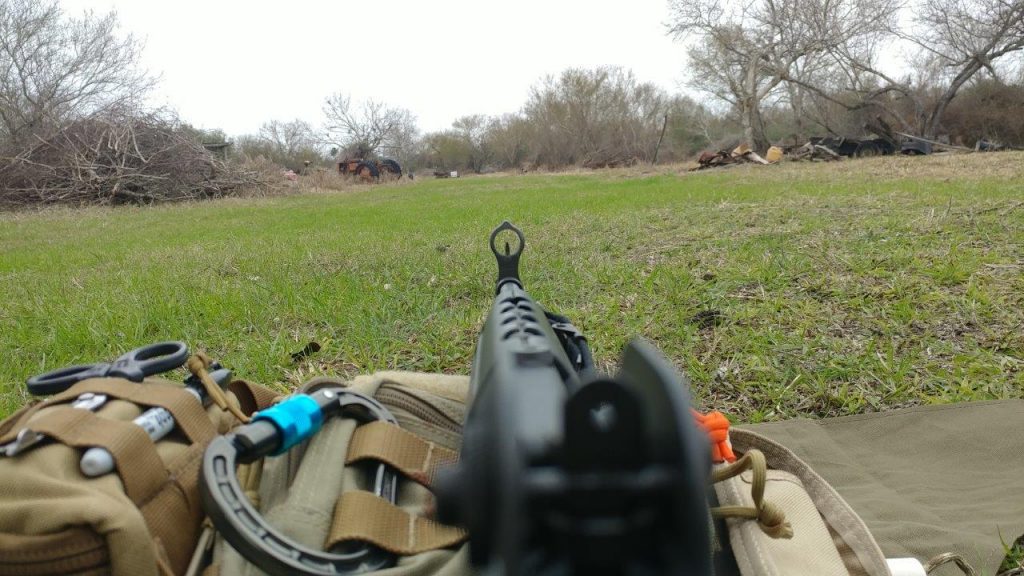
The sights are adjustable for typical battlefield distances. Represented are 25-350 meter battle zero, then 400-500-600 meter settings. The rear sighting system is unique and has several components unique to the Daewoo. Both elevation and windage are adjusted at the rear. The fixed front sight is protected by a globe of forged steel, and it is pinned in place with a beefy steel blade. The front post is far beefier and better protected than the A2 square post. There is a slight taper at the tip.
I sighted in at 25 yards to sight in with a standard battle sight zero. Unfortunately, the weapon has no provisions for low light shooting. The small peep darkens dim light conditions. The default sight setting appears to be 25-350 ish meters. I sighted in and went down two clicks on the elevation, but I have no idea if that’s the operating procedure for the Koreans… Targets between 0-200 will require hold under. This battle zero is quite aggressive. Without a close-range aperture or ghost ring… It feels far less adaptive.
Of course, you could sight it in for whatever you want… But then the elevation wheel won’t match your known range targets. Se-la-vie.
The K2 has more apparent recoil than the 20 inch ARs I have in my inventory. I adjusted the gas down a notch and recoil became a bit tamer, but still perceptibly more than an AR. One thing to point out is that the muzzle is bare. It has no compensating properties whatsoever. The humble A2 flash hider reduces felt recoil a small amount on the M16 series of rifles to it wouldn’t be quite a fair comparison until the woo gets fitted with a comparable compensator.
Aside from the increased recoil, the rifle functions flawlessly. The AR15 FCG and very familiar manual of arms make this a very comfortable rifle to manipulate and shoot. The rifle feels robust and getting behind the K2 / DR200 feels confident. Sometimes you get behind domestic rifles that feel flimsy or cheapen out in some area that doesn’t inspire confidence. The K2 does not have that deficiency. It feels robust, and grabbing it if things went wrong would not frighten me in the least.
Accuracy:
The rifle was compared tit-for-tat against a standard consumer-grade 20 inch Ar15 from palmetto state armory. I used 52-grain ELD match hand loads for the basis of my accuracy comparison. I used standard single-stage AR15 triggers in both rifles for the iron sight testing… so how did the woo do?
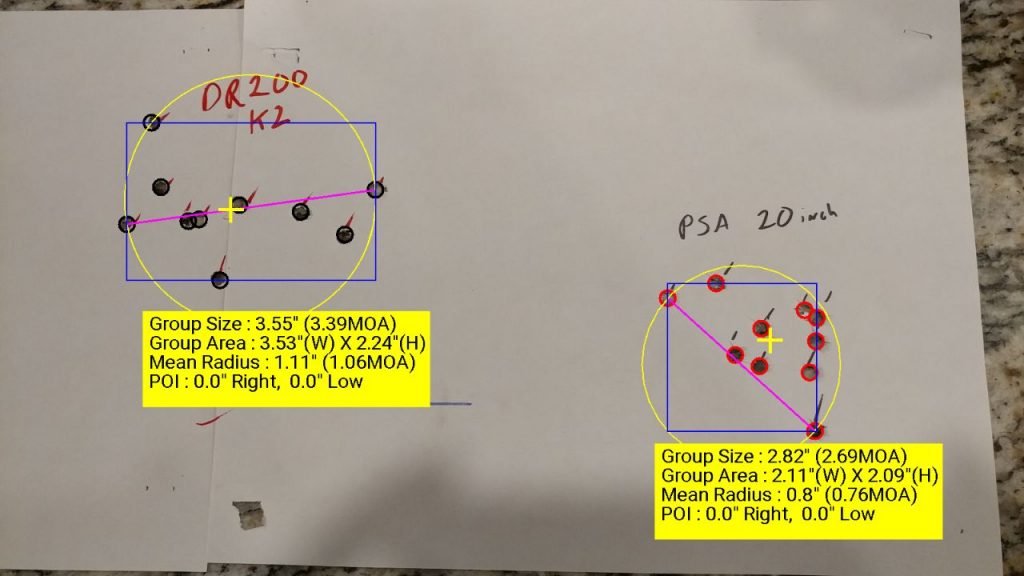
It’s acceptable accuracy, but it’s not as accurate a rifle as the M16 series. I believe it is going to be inherently less accurate due to the gas piston reciprocating above the barrel. There are simply more variables present than the AR15’s pipe and gas tube setup. The AR15 was more accurate but the Woo is certainly acceptable and should be capable of hitting man-sized targets to extended distances.
Reliability:
The Woo was tested by a simple drop test into the edge of a pond. The rifle was dropped ejection port up, and down, to simulate a worst-case scenario of a soldier falling into some mud and water. The mud I am working with is pure clay and the water becomes saturated with particulate when disturbed. I had multiple failures to eject before I moved the gas setting from S (small) to M (medium) and managed to shoot a few rounds on semi before it converted to a bolt action rifle.

Clearing this gun of malfunctions is easier than an AR15. Because of the charging handles position, you can reach up and pull the bolt back easily. It’s big and easy to grab, even when muddy. The rifle was sticking pretty badly, however… so I decided to hump it back to the firing line. My efforts to get the rifle cleared consisted of dousing it with canteen water and cycling the action. I want the least invasive method to get the rifle running again. After a dousing, the rifle returned to the semi-auto function.
The mud test would down any number of rifles, but I think the important point of the Daewoo is the charging handle lets you work the action to clear the malfunctions.
Should You Get One?
Retailing around $800 for a DR200 to $1500 for a K2, this is a significant investment. For a collector, certainly, they are neat rifles and would look great in your armory… but for shooters… that’s a different story. I feel bad leaving any gun in the safe. I want to shoot it, I want to learn its intricacies, and I want to step on the gas. These aren’t museum pieces; rifles like the K2 were built to arm a nation and to defend her borders. In this case, the Korean small arms industry built an amalgam of aluminum, steel, Stoner, and Kalashnikov to produce a hellacious fighting rifle. I want this rifle squared away and ready to serve any duty. It’s dishonored by collecting dust.
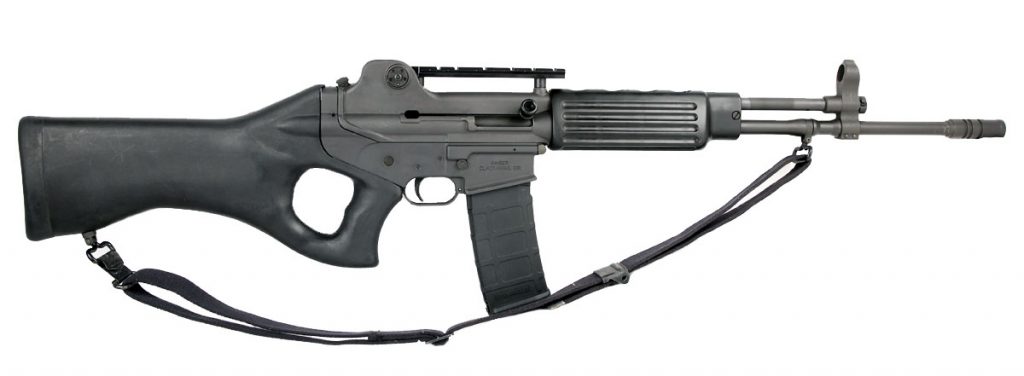
The DR200 is your spare parts source for a converted DR-200 or K2. Yes. It’s hideous.
Should you purchase one for shooting, you will need a spare. The less desirable DR-200’s are available for a lower price, but the furniture is hard to obtain. Companies such as Stormwerkz provide a few new US-made components for the DR-200s that will allow you to adapt several stocks to the rifle, but the hard part will be finding a pistol grip. Finding a domestic K2 grip is going to be a game of hide and seek… or perhaps you will need to fabricate your own from a FAL grip or with modge podge. The Fire Control group can be supplied with any number of Ar15 manufacturers so that’s a bonus. Once you swap out the entire FCG, stock, grip, and use a US-made magazine, 922r compliance is a done deal. The thing is… will you ever convert it? Where did my pistol grip come from? It was the last one J&T USA had… and it had been sitting on the shelf for years.
The best use for DR-200’s at this point will be for spare parts for an actual K2. Retailing around $1500 – $2000 you are paying a pretty penny for a used to NIB exotic. With the factory folding stock, flash hider, and all the good features, the K2 looks like a fine rifle for shooting and collecting. Throw in a USED Dr-200 for parts and you should have everything you need to keep your rifle running for years. I have had custom firing pins made for my DR-200 so small items like that can be sourced from a competent smith. Same for the gas tube, as it is a simple component.
The bolt, however… is a source of worry. Without a spare rifle to steal from, this critical component would put your gun on the wall. I would advise against any 7.62×39 DR-200’s as they appear to crack lugs base on my research online. The 5.56 rifles seem more robust with users reporting thousands and thousands of rounds down the pipe without any problems.
Wrapping Up:
The K2 is a fine fighting rifle. It’s reliable, has good ergos (save for the reach of the safety), and it’s built to last. It’s a pleasure to shoot and the testing I did was confidence-inspiring. Let’s score it:
Accuracy: C technically this rifle would get a D for accuracy, but with an optic, I am sure it could come down to a 2.5-3 moa gun. I will give it the benefit of the doubt. The ability to add an optic rail redeems the woo as adding optics will enhance shooter precision. I am now aware that pre-ban K2s have a 1/7 twist barrel so likely you could shoot heavy match ammo with some degree of precision. Dr-200’s are 1/12.
Reliability: B The rifle functioned without issue when clean, but struggled through the mud. Since I didn’t have to field strip the rifle to get it running, it gets a solid B.
Ergonomics: B Lighter than a 20 inch AR15, points well, and all the familiar controls of an AR15. It gets a B simply because the safety is awkward to use (as it rotates 180 degrees) and the magazine release is hard to reach.
Overall Rifle Score: B-
Borrowing from many good designs of the time, it’s a worthy addition to your fighting rifle collection… if you can swing for two of them to ensure you have some spare parts available.
If you like what we are doing, please consider visiting our sponsors Brownells and Palmetto State Armory. If you buy something, we will get a small portion of the sale and we use it to pay our authors, webmaster, and purchase gear to review independently. Independent rifle reviews are rare and hard to find. We hope to change that at thenewrifleman.com.
Score Criteria:
Accuracy with match Ammo: A .1 – 1 MOA. B 1.1-2 MOA. C 2.1-3 MOA. D 3.1-4 MOA. F 4.1-5 MOA.
Reliability: A Shoots through mud and grime no attention needed. B Requires corrective manipulation. C Requires field stripping. D requires parts replacement. F Back to the factory.
Ergonomics: Slightly more subjective. A Lightweight rifle with all controls in reach. Reference: M4 carbine. B Some controls out of reach. Awkward controls. Weight increases. C: Many controls out of reach or awkward manual of arms, and or more weight. D: Awkward mess, hard to manipulate, heavy, a strain to use. F: A boat anchor. No redeeming qualities as a fighting rifle. Reference: A bench rest gun.





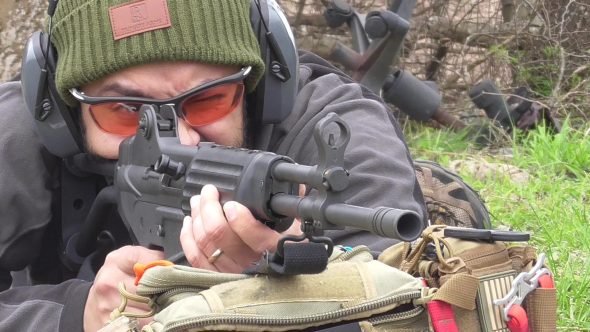



I think the Elevation Dial reads, 25 as in 250 meters. Not 25 meters.
How do you do a review on a k~2 and use a dr~200. Guns are completely different
Please explain. DR200 is just a neutered version.
More Re-coil than a 20″ AR ???? I have a DR-200 and it has 1/3 less recoil than a AR thats what made me buy mine in 95′ you say more? I say there is something wrong with the rifle you fired which also can explain your Accuracy differences, Mine is Dead-On @400yrds Smoking Hot, and the only time it has ever given me any functional probs is a few failures to completely eject (caught the empty Brass) @ 1100+ rounds without cleaning, then flip out the piston Douche it and back to shooting all day. If I did not own one I would be looking for one.